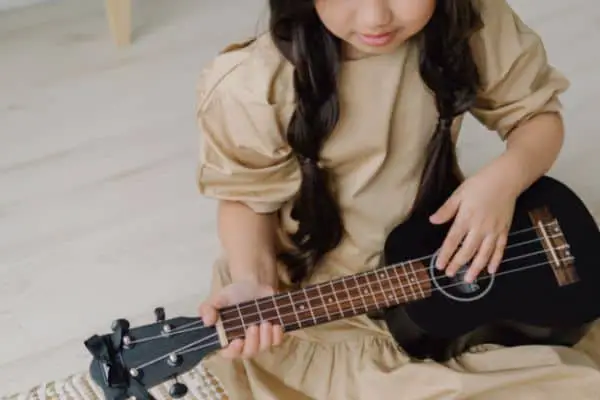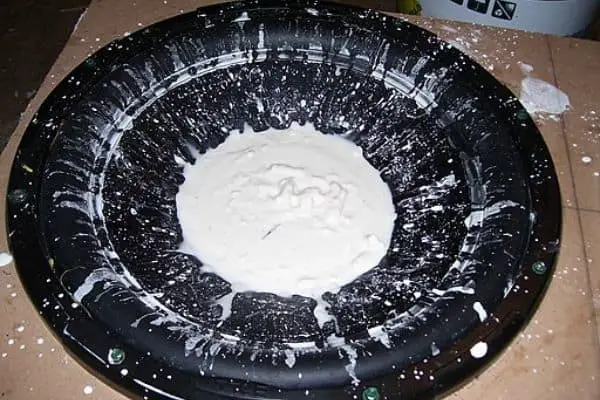Top 3 Music Science Fair Projects (Physics + Music)
Sound isn’t only amazing when you listen to it. It becomes even more amazing when you analyze it from a scientific point of view!
People have tried to find various explanations for these auditory responses, ranging from mythology to psychology and physics. The human ear has garnered an evolutionary adaptation to music, rhythm, and the amazing ability to enjoy harmony.
In this article, we’ll break down the biology, physics, and cultural aspects of making music, hearing music, and how it inevitably affects us.
Music is a perfect blend of science and passion
Interesting Projects To Do At A Science Fair
One of the best ways to learn about music is through an array of intriguing, and super fun STEM-based experiments and projects.
#1. Learn about Resonance and Acoustics by Making a Ukulele
Best for ages: 9 – 10 years old | Elementary School

Exposing children to music at an early age can create a spark and get them interested in music, dancing, etc. Listening to music can help kids strengthen their communication skills and motor skills.
Materials needed:
- Cardboard box
- 4 big elastic bands
- 2 Pencils
- Paper roll
- Plastic straw
- Scissors
- Glue
- Paint
Procedure:
- Cut a circle in the middle of the box.
- Paint the box and the paper roll in any desired color and allow them to dry.
- Cut out a circle in the middle of the box and on top of it for the ukulele neck.
- Make a few cuts on both ends of the paper roll, and glue it to the circle on top of the box. You should end up with something that’s starting to look like a ukulele.
- Cut the straws into four equal pieces and glue them on the top of the paper roll.
- Stretch the elastic bands over the paper roll and around the box. They should be right on top of the circle. You can try and use elastic bands with different lengths and widths. What sound does a shorter elastic band make?
- Place one of the pencils under the elastics. It should be placed right under the circle and it will act as the ukulele bridge, and another one diagonally over the circle, it should act as a ukulele tuner.
The pencil will stretch out the elastic bands and create more tension. The tension in the elastic bands will be responsible for the higher notes played on the ukulele.
When plucking the cardboard ukulele, the sound resonating won’t be as harmonic and loud as the sound coming from a wooden ukulele. An excellent opportunity to ask why – and try to figure out the explanation!
Why are most instruments made of wood anyway?
Cardboard doesn’t have good resonating characteristics. Firstly because of the soft paper material that doesn’t have a smooth surface, and secondly, because of its basic shape. It doesn’t really absorb the oscillations produced by the strings, but it doesn’t reflect them either. So in this case, it should act as a mild transfer for the sound produced by the elastic bands.
Ta-da, your kid should have a playable (well, relatively!) ukulele. They can move around the pencils to get different notes and explore the world of different tunes, or you can help them and try to make a playable wooden ukulele even though it requires a lot of research.
Check out a similar (though not identical) project idea in the video below.
#2. Understanding Sound Waves Via Non-Newtonian Fluids
Best for ages: 11 – 13 years old | Middle School
A non-newtonian fluid is a fluid whose viscosity can be affected by shear rate and shear stress. Shear rate is the change and flow of velocity in fluids, and shear stress is the force applied to fluids. These two terms are closely related and they are affected by each other.

A perfect example of a non-newtonian fluid is oobleck (a concoction made out of water and cornstarch). The unpredictable nature of oobleck can help us understand and visualize sound waves.
Materials Needed:
- Old speaker
- Plastic foil
- Tape
- ¼ cup water
- ¾ cup cornstarch
Procedure:
- Mix ¼ cup of water with ¾ cup of cornstarch. The ratio of water to cornstarch should be 1:1.5.
- Plugin the speaker and place it horizontally with the diaphragm facing upwards.
- Tape the foil on the diaphragm.
- Pour the oobleck onto the foil.
- Play some music and watch the oobleck dance.
You can try and play different frequencies, ranging from 10Hz to 500Hz, and see the various results and dance moves.
You can try to modify the experiment by changing the ratio of water and cornstarch. If you put less water the oobleck should act more like a solid and vice versa.
Try it out and see how the different types of oobleck react with different frequencies.
Lower frequencies have a longer wavelength therefore they have a bigger force. The force from the low frequency should make the oobleck act as a solid.
Frequencies and wavelengths are inversely proportional meaning that as you increase the frequency, the wavelength gets shorter, and it has less force, hence the oobleck should start acting more like a liquid.
Have fun with this experiment, and feel free to send us a video of your results.
#3. Create Your Own Song Medley
Best for ages: 13 – 18 years old | High School
Merge your favorite songs into one masterpiece with the help of physics and musicology!

Creating a song medley can be very tricky, it requires great knowledge of the fundamental elements of music like melody, texture, rhythm, form, and harmony. With good research and hard work, you will have your medley with a written academic elaborate.
Things needed:
- Audio editing software
- Interest in music and music theory
Procedure:
- Find 2 or 3 songs that you like.
- Do in-depth research online: find the beats-per-minute of the song, also known as the tempo of the song.
⚠️ Find songs with a similar tempo in order to have a sweet-sounding medley. It’s very important to avoid major changes in tempos when making a song medley.
- The songs should have a similar pitch and rhythm. The combination of pitch and rhythm is called a melody. It’s easier to create a medley of songs that have a similar melody.
- Analyze the architecture of the song, and find the verses, chorus, and bridge – the bridge is what you need in this case!
👉 You don’t need to be a professional music producer to incorporate multiple songs into one. It’s all in your taste, the vibes of the songs, and the bridge between them.
- Find a suitable audio editing software, there are many free programs online. Import the songs and experiment until you get the desired result!
- Write a paper about the whole research process. Include the tempo, dynamics, rhythm, and a short analysis of the musical syntax of the song.
You can experiment with different tempos and melodies. For your next medley, you can try and merge songs with a different melody and vibe. Make a transition from a sad to a happy song or vice versa.
There’s a chance you will create a mainstream song that will be heard around the world. So hop on the train of music theory and create something majestic!
Or create your own song like them 👇
Frequently Asked Questions
Does my child need to learn about music theory before playing an instrument?
Music theory is crucial for playing any instrument, but it’s not a requirement. Your kid can learn about the theoretical background after showing a general interest in playing something. Let them explore the sounds first, and science can hop in later!
How does music affect my child’s mental development and behavior?
The brain is an organ of adaption. During childhood, our brains have more active neurons and kids can easily grasp complex lessons whether they are about languages, different sciences, or music.
Music improves brain development in juvenile years by enhancing the use of the frontal lobe also known as the part of the brain responsible for the overall thinking process, decision making, and planning.
What is the difference between music and musicology?
Musicology is the scientific part that stands behind the music. It studies the core basics of music like musical theory, the history of music in different cultures and different periods, and the physical nature of sound.
On the other hand, music is just simple sounds coordinated with time. Music is an art form able to bring out the harmonic beauty of sounds.







